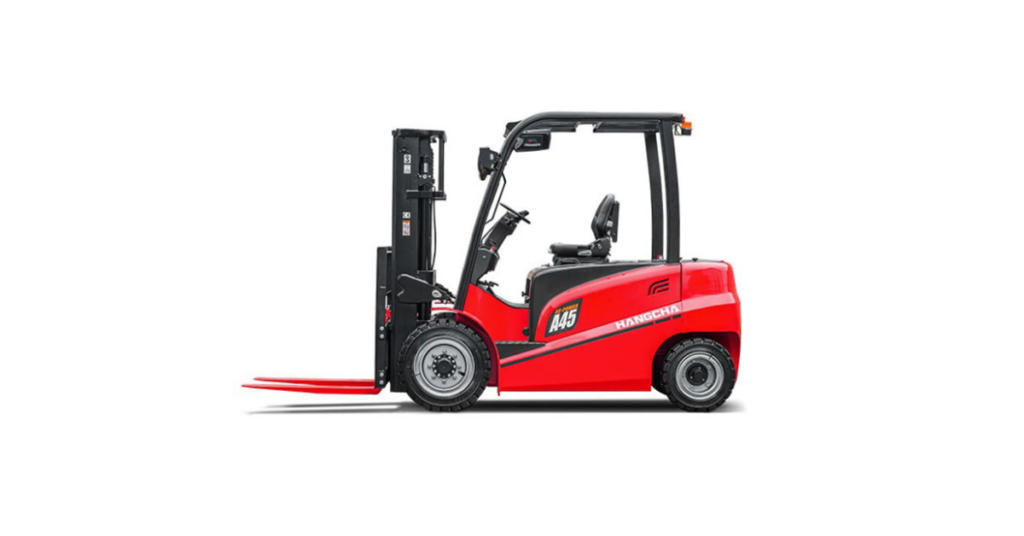When you think of forklift safety, you probably consider tips for keeping your employees safe on the warehouse floor. However, there are some other aspects of forklift safety that might not be as obvious, such as how to make sure the forklift you’re using is up to code and safe to use on the warehouse floor. Because even if your forklift operators are following all of the safety guidelines, if the equipment they’re operating isn’t safe then it could still be a hazard.

The Dangers of Crushed Fingers
It’s easy to think of warehouse safety as a means of preventing slips, trips and falls. But some injuries that occur on a warehouse floor can’t be prevented by keeping floors free from debris or by creating safe walking surfaces. Some of these injuries can lead to crushed fingers or broken bones, while others – such as forklift-related accidents – can cost your company its reputation and its bottom line.
One of these common injuries is a crushed finger or hand. If you’ve never had someone suffer a crushed finger on your warehouse floor, consider yourself lucky. Crushed fingers are among some of the most severe and painful injuries that can occur while working at a warehouse or distribution centre.
5 Tips for Safety Every Time You Get on a Forklift
When it comes to warehouse safety, you know that forklifts and warehouses go hand-in-hand. Forklifts are powerful machines that can carry hundreds of kilograms at a time, but they can also cause serious damage if used improperly. In fact, many accidents involving forklifts happen because operators do not follow proper safety procedures. Here are five tips for safe operation every time you get on a forklift.
- Always follow safety procedures. Every time you drive a forklift, no matter how simple your job might seem, always double-check that you are adhering to your company’s safety rules. Make sure you and any colleagues working with you know and understand all aspects of warehouse forklift safety so you can all work together efficiently.
- Do not wear loose clothing or dangling jewellery. Loose sleeves, scarves, or necklaces can get caught in a forklift’s moving parts. You should also keep your hair pulled back and secure any loose clothing so it doesn’t come into contact with machinery. And don’t forget to wear your safety goggles!
- Always turn off your forklift before getting on or off. This might seem like a no-brainer, but many people have been injured because they failed to do so. Making sure you and your colleagues always stop your forklifts before dismounting will not only prevent accidents, it will also help save energy. That’s good for you and the environment!
- Make sure you can see clearly. Make sure you wear proper eyewear while on a forklift—not only will it help prevent accidents, but it will also keep your vision clear. No matter how good your eyesight is, avoid wearing sunglasses or safety goggles that don’t offer adequate UV protection and glare reduction. Always make sure you can see clearly before climbing onto a forklift!
- Use your seatbelt every time. Even if you’re just climbing on or off a forklift, you should always wear your seatbelt. This is because accidents can happen at any time, and wearing a safety belt will help keep you secure even if something unexpected happens. Additionally, making sure all of your colleagues follow proper procedures for using seatbelts will ensure everyone stays safe daily.
Good Posture is Crucial for Safe Driving
How many times have you been told, You need to have good posture? When it comes to driving, having good posture and maintaining a safe environment for you and your passengers means so much more than a backache. What do good posture and safe environments look like when you’re operating machinery? Be sure you follow these tips for warehouse safety when using a forklift.
Avoiding Slips and Falls
Slips and falls are major causes of workplace injuries. Even if you’re standing still, most floors are polished or greasy, so it’s important to keep an eye on your footing at all times. This is especially true when you’re working with hazardous materials like chemicals or large machinery—particularly something that involves heavy lifting.
Stay Alert to Avoid Fatigue-Related Accidents
If you’re supervising forklift operations, you need to be alert for signs of fatigue. Even if your drivers have full-time jobs outside of work hours, they can still become too tired to safely operate a forklift. Fatigue is a serious problem that can lead to accidents or injury. Be sure drivers get at least eight hours of uninterrupted sleep before going on duty and take regular rest breaks while they’re working.
About Value Materials Handling
Value Materials Handling is one of South Africa’s largest forklift dealers. They provide a variety of business and industrial products for sale and hire, including forklifts, lift trucks, hydraulic aerial lifts, and pallet jacks. Visit their website at https://valueforklifts.co.za/